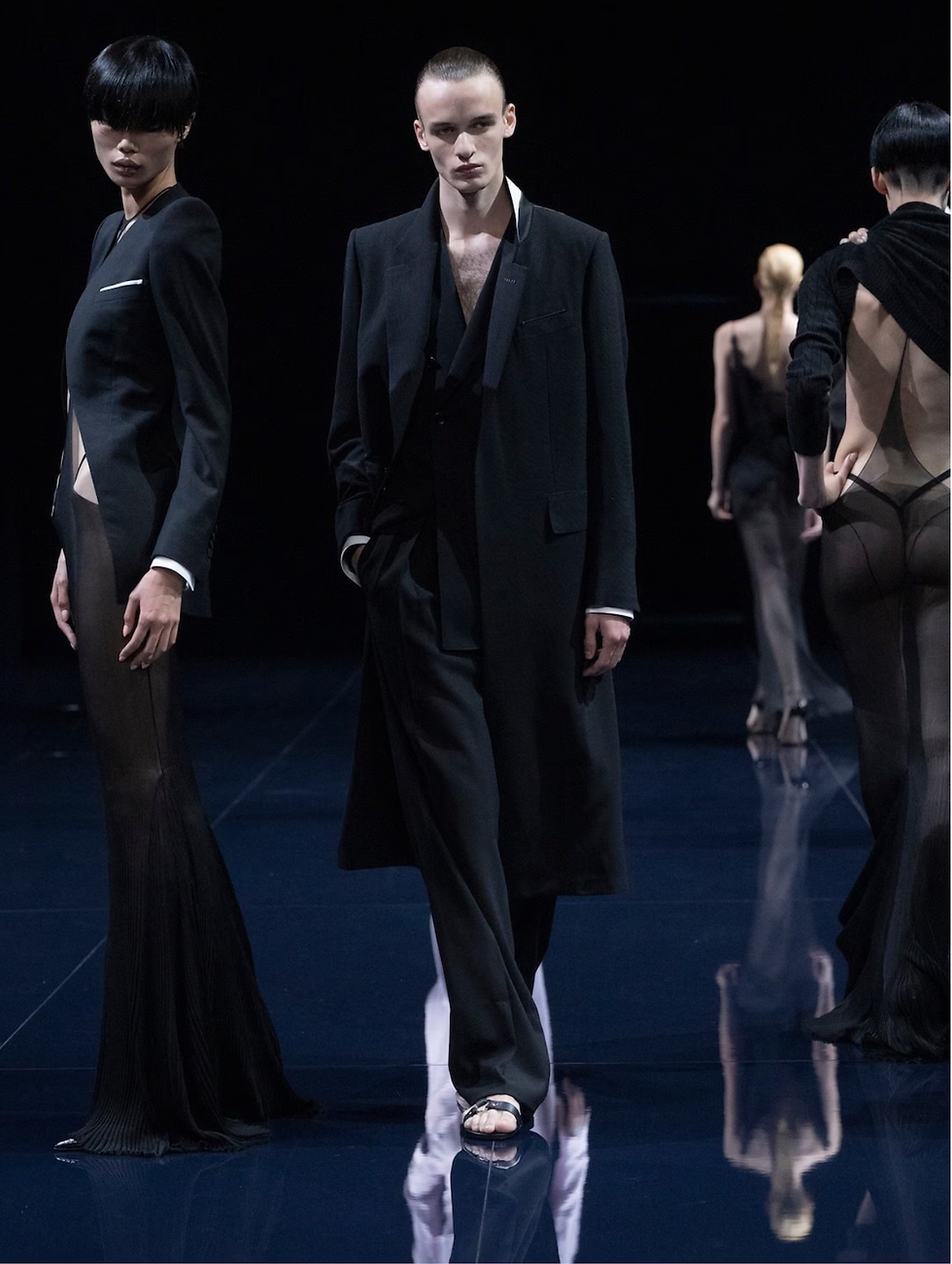Velvet at Midnight, Silk at Dawn: Tom Ford by Haider Ackermann.
- T
- Oct 4
- 3 min read
Tom Ford’s name sits in fashion history like a cigarette burn on silk - indelible, deliberate, and impossible to ignore. His Gucci in the ’90s was more than clothing; it was theatre, provocation, and power rolled into velvet lapels and satin bias cuts. He didn’t just revive a house; he rewrote an era, placing glamour back on the world stage with the audacity of Madonna in Evita, the sinister masks of Kubrick’s Eyes Wide Shut, and the sharp chiaroscuro of a Helmut Newton photograph. Sex was not suggestion but spectacle, a spotlight performance where everyone played a role.

So when Haider Ackermann inherited the Tom Ford name, the question hovered: would he mimic the velvet thunder, or shift the rhythm entirely? His debut offered an answer. Shot by Juergen Teller, the Autumn/Winter 2025 campaign was less proclamation than séance. Models moved through graffiti-smeared mirrors and shadow-drenched rooms, Ford’s ghost visible in a satin hip, a white gardenia at a lapel - but everything slowed down, like a Wong Kar-wai camera pan. If Ford was Studio 54 at midnight, Ackermann was In the Mood for Love at dawn: glances that last too long, seduction as silence rather than roar.
By Spring/Summer 2026, with a collection pointedly titled Desire, Ackermann made his philosophy unmistakable. Sheer slips paired with bralette tops, liquid tailoring, harness-strapped sandals - these were unmistakably Ford’s silhouettes, yet the mood was different. Where Ford played seduction as conquest, Ackermann treated it as memory. The aftertaste, not the sip. It was Antonioni’s L’Avventura, the power of absence, the tension of what isn’t revealed. Desire here wasn’t about a champagne-drenched spotlight; it was about the echo hours later, the skin that still remembers touch long after the night is over.

This is where the comparison becomes cultural as well as aesthetic. Ford’s Gucci was Warhol’s Factory colliding with Guy Bourdin - bold, cinematic, unapologetically performative. Ackermann belongs to a quieter lineage, one that feels closer to Tadao Ando’s concrete sanctuaries, where light and shadow do the work of ornament. Ford built baroque stages for glamour; Ackermann, like Ando, carves space with restraint, letting emptiness create the intensity. Both are architects of desire, but one thrives in spectacle while the other finds potency in silence.
And perhaps that is why Ackermann’s Tom Ford matters now. In the ’90s, Ford’s swagger was the antidote to grunge: excess as resistance, velvet as rebellion, glamour as theatre. But today, in a world oversaturated with display, where every image clamours for attention, overt bombast risks redundancy. Seduction now lies in ambiguity. Ackermann doesn’t scream down the runway; he whispers and makes you lean in. His work lingers like an unresolved chord - less Bowie in full spandex, more Bill Evans letting a note hang in the air until it almost dissolves.
The tension between Ford and Ackermann is not a rivalry but a dialogue, two languages of seduction separated by a generation. Ford gave us velvet at midnight - spectacle, sweat, and adrenaline. Ackermann offers silk at dawn - aftermath, consequence, and the echo of intimacy. One cannot exist without the other; they define each other by contrast. And that, perhaps, is the genius of Ackermann’s tenure: not to erase Ford, but to refract him, to hold up the legacy against a softer light and show us that glamour can be both velvet thunder and whispered silk.
---
Words by AW.
Photos courtesy of Tom Ford.





